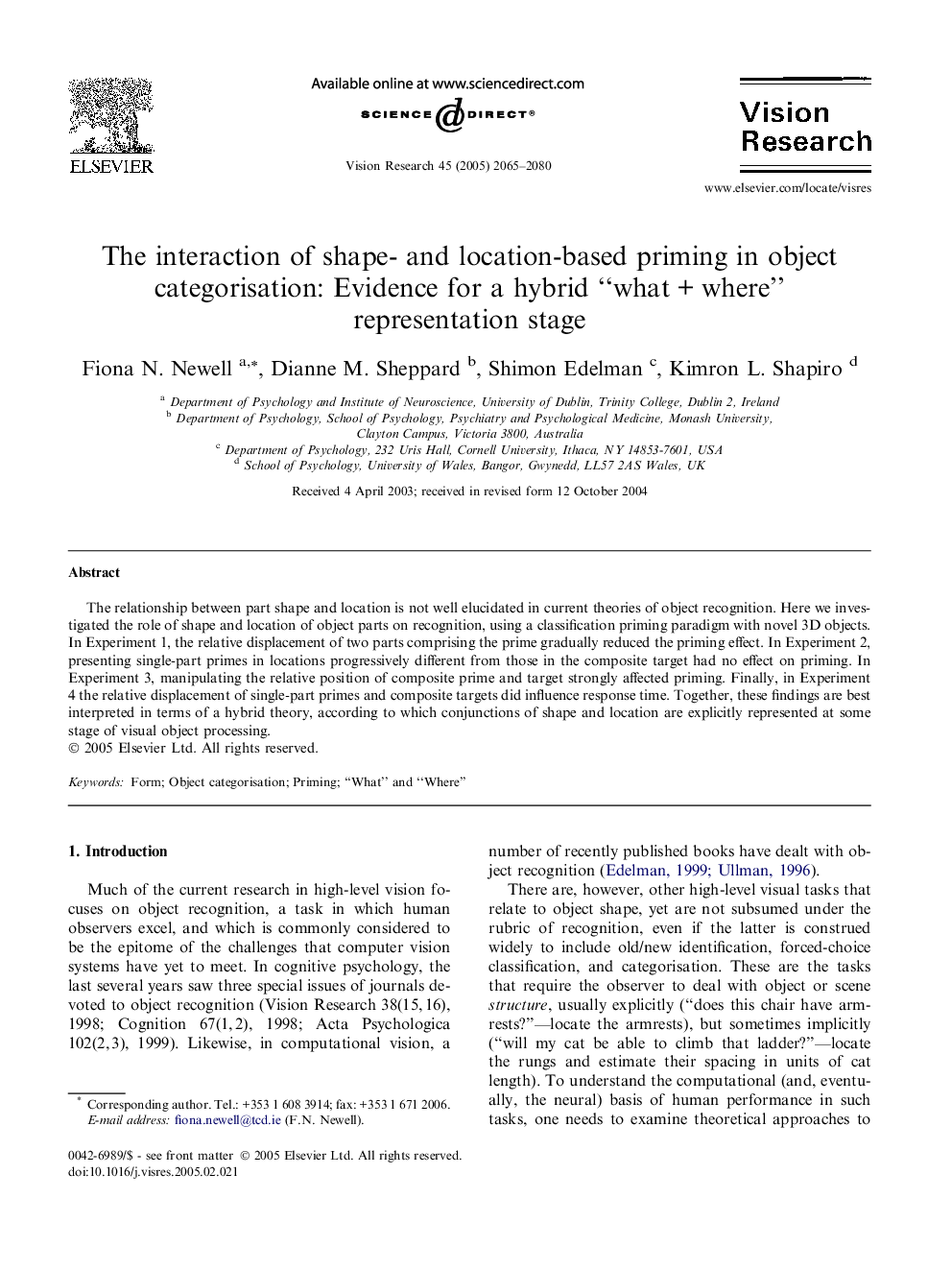| Article ID | Journal | Published Year | Pages | File Type |
|---|---|---|---|---|
| 4036800 | Vision Research | 2005 | 16 Pages |
The relationship between part shape and location is not well elucidated in current theories of object recognition. Here we investigated the role of shape and location of object parts on recognition, using a classification priming paradigm with novel 3D objects. In Experiment 1, the relative displacement of two parts comprising the prime gradually reduced the priming effect. In Experiment 2, presenting single-part primes in locations progressively different from those in the composite target had no effect on priming. In Experiment 3, manipulating the relative position of composite prime and target strongly affected priming. Finally, in Experiment 4 the relative displacement of single-part primes and composite targets did influence response time. Together, these findings are best interpreted in terms of a hybrid theory, according to which conjunctions of shape and location are explicitly represented at some stage of visual object processing.
